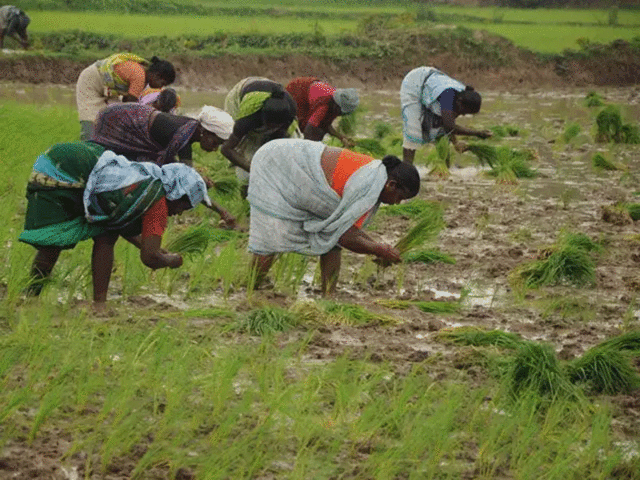Push for micro-irrigation says Economic Survey
The Economic Survey say that through government schemes like the Pradhan Mantri Krishi Sinchayee Yojana (PMKSY) which was launched in 2015 the area under micro-irrigation was increasing.
by Madhvi Sally
NEW DELHI: To increase water use efficiency at farm level, Economic Survey 2019-20 advises further penetration of micro irrigation to ensure a sustainable agricultural practice. It says that there is good scope to use this technology in closely spaced crops like rice, wheat, onion and potato.
In 2018-19, over 12 lakh hectare land is under micro-irrigation, according to government data.
The survey says that the micro-irrigation is a proven technology which has gained immense popularity amongst the farmers. Farmers have been able to save irrigation water from 20 to 48 per cent; energy saving from 10 to 17 per cent; saving of labour cost from 30 to 40 per cent; saving of fertilizers from 11 to 19 per cent and increase in crop production from 20 to 38 per cent, it says.
"With this technology, additional area can be irrigated with the same amount of water compared to conventional method of irrigation. In addition, water deficient, cultivable waste land and undulating land areas can be brought under cultivation due to ease of irrigation," says the Economic Survey.
The industry says that it is encouraging to see the observations done in the economic survey regarding the increased productivity and income levels. "Seeing rice as the targeted crop for micro-irrigation is certainly revolutionary and can have long term positive impacts in overall agriculture health,” says Randhir Chauhan, MD, Netafim India. Strategic push for micro-irrigation will see immense transformative benefits for the farmer, economy and economy as a whole, he added.
“Last year a good coverage of 1.1 million hectares under micro-irrigation was achieved. A stronger push and appropriate fund allocation is the need of the hour to realize the target of 1 crore hectares coverage in 5 years. Online portal for entire process execution and visibility, transparency in the process of fund disbursement, ensuring checkpoints at various stages and adherence to timelines can accelerate the coverage and also encourage more investment by prospective competitors, thereby benefiting farmers,” adds Chauhan.
The strength of this technology include - efficient deployment of inputs such as water, electricity, fertilizers, labour, increase in crop productivity, better quality of produce leading to higher realization of sale price resulting in increased income of farmer, it says.
The Economic Survey say that through government schemes like the Pradhan Mantri Krishi Sinchayee Yojana (PMKSY) which was launched in 2015 the area under micro-irrigation was increasing.
Also, the Rs 5000 crore dedicated Micro Irrigation Fund (MIF) created with Nabard was facilitating the states in mobilizing the resources for expanding coverage of micro irrigation envisaged under Per Drop More Crop component of PMKSY and also in bringing additional coverage through special and innovative initiatives by state governments, the survey says.
Chauhan points that this year the current coverage under micro-irrigation is at 0.57 million hectares so far and will likely to see a sharp decline in this fiscal year due to paucity of funds, implementation issues and payments to suppliers.“The central push for micro-irrigation is well appreciated. Currently, states are facing challenges to implement the Per Drop More Crop program and will have a better opportunity to leverage the Nabard fund program,” he says.